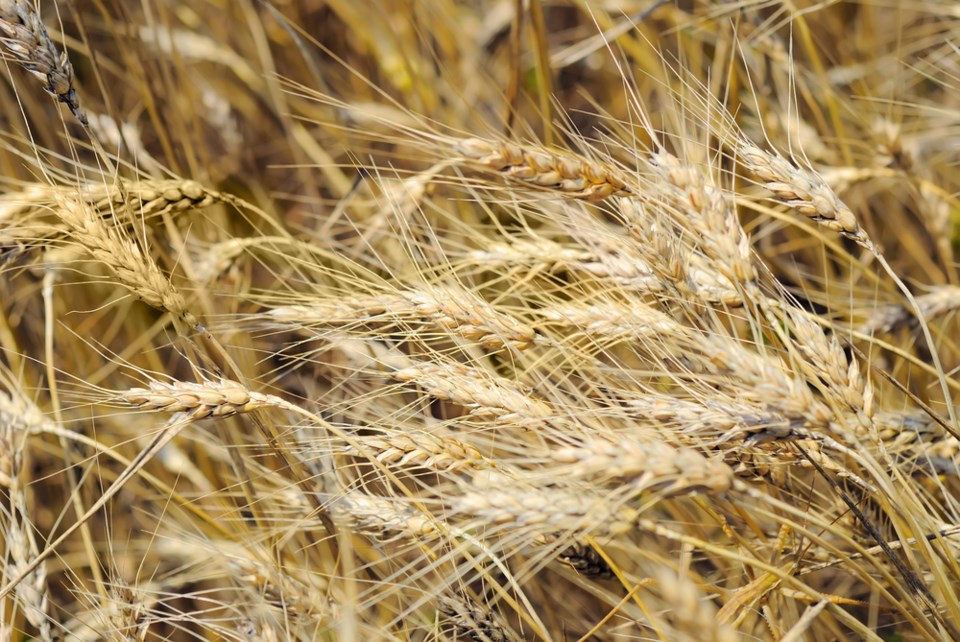Over the past week, some areas received welcome rainfall that will benefit most crops. However, this precipitation has delayed haying operations in those areas. Cooler conditions over the past week will benefit some crops by slowing development. Many regions are hoping for additional moisture to help support crop development, reduce crop stress and sustain topsoil moisture conditions.
Many areas across the province received varying amounts of moisture, and a few isolated storms moved through the province and brought hail. The highest rain recorded over the past week was in the Ponteix area at 44 millimetres (mm), followed by the Shaunavon area at 39 mm. The Semans and Lafleche areas each received 37 mm.
Currently, cropland topsoil moisture across the province is rated as 60 per cent adequate, 32 per cent short and eight per cent very short. Hayland topsoil moisture is reported at 45 per cent adequate, 40 per cent short and 15 per cent very short. Pasture topsoil moisture is 43 per cent adequate, 37 per cent short and 20 per cent very short. Areas like the southwest have seen improved topsoil moisture levels, while levels in the north regions have declined.
Most crops are in normal stages of development, consistent with what has been reported in previous weeks. Seventy-one per cent of fall cereals are at normal stages of development with 27 per cent estimated ahead of normal for this time of year. 75 per cent of spring cereals are at normal stages of development, while 17 per cent are ahead of the normal stages of development. 73 per cent of oilseeds are at normal stages of development, while 12 per cent are ahead and 15 per cent are falling behind the normal stages of development. Currently, 79 per cent of pulse crops are at normal stages of development, while 18 per cent are ahead of the normal stages of development. 65 per cent of perennial forages and 72 per cent of annual forages are at the normal stages of development for this time of year.
While crop conditions vary across the province, crops overall are reported to be in good to fair condition. In areas with a lack of moisture, reports indicate that canola and mustard are finishing the flowering stage early.
Currently, 40 per cent of the province's first cut of hay has been baled or silaged with 29 per cent of hay cut and waiting to cure and 31 per cent still standing. Overall hay quality is rated at 11 per cent excellent, 51 per cent good, 31 per cent fair and seven per cent poor. Some producers are moving on to their second cut of hay, but others have indicated they are not anticipating a second cut unless rain is received.
Producers in the southwest, along with some areas in the northwest, are reporting moderate to severe crop damage due to lack of moisture. Minor to moderate crop damage due to dry conditions, heat and wind is being reported in many areas. Additional crop damage this past week is mainly due to gophers and grasshoppers. Overall, pest pressure is lower throughout many regions, but producers are continuing to monitor their fields for any changes. Fungicides are continuing to be applied to suppress disease that has already developed or proactively to reduce disease development.
Over the upcoming weeks, producers will be busy finishing fungicide spraying, haying operations and getting equipment ready for harvest. Producers are reminded to keep safety top of mind while working.
For any crop or livestock questions, producers are encouraged to call the Agriculture Knowledge Centre, toll free: 1-866-457-2377.
This can be a stressful time of year for producers as weather conditions can be unpredictable. The Farm Stress Line can help by providing support for producers toll free at 1-800-667-4442.
A complete, printable version of the Crop Report is available online: download Crop Report.
Follow the 2025 Crop Report on X (Twitter) at @SKAgriculture.




